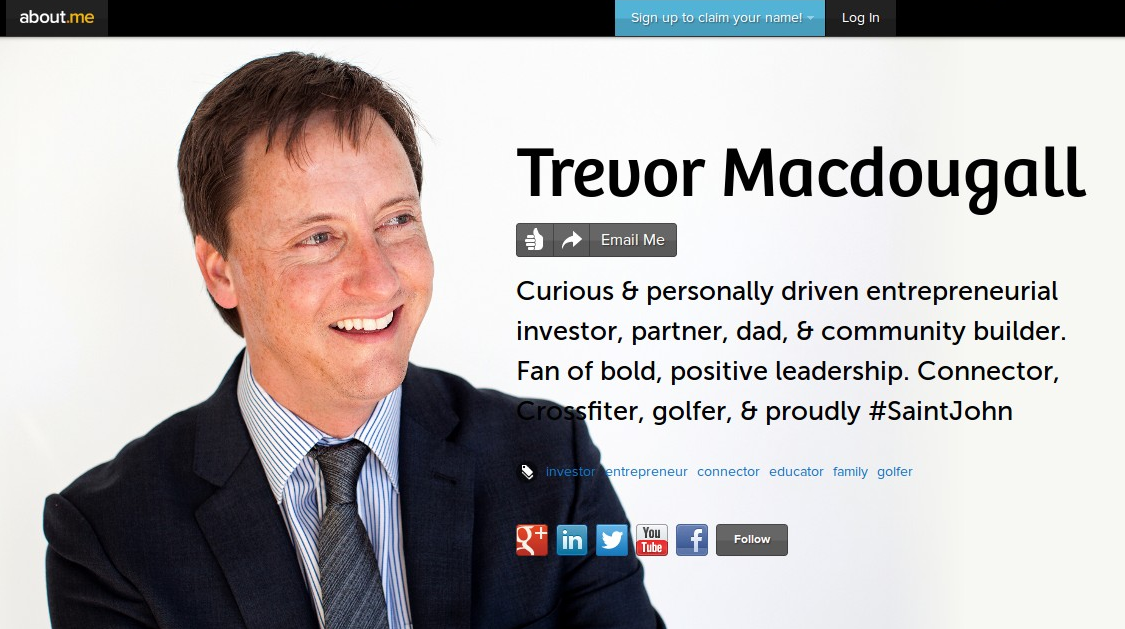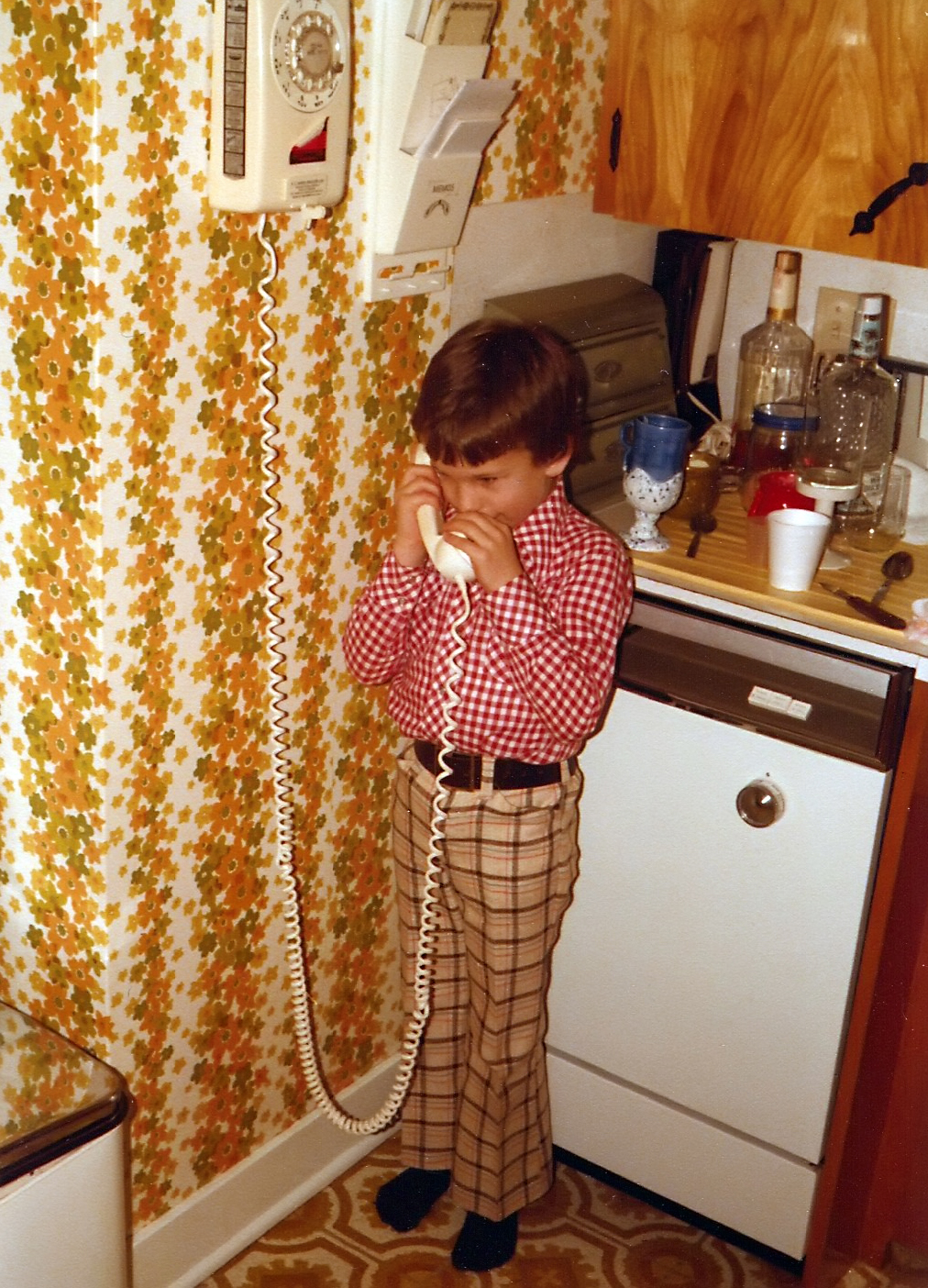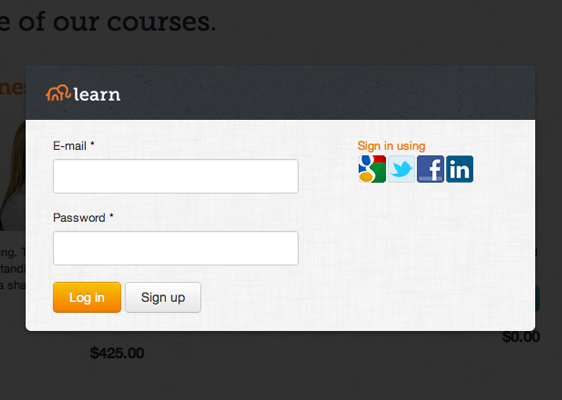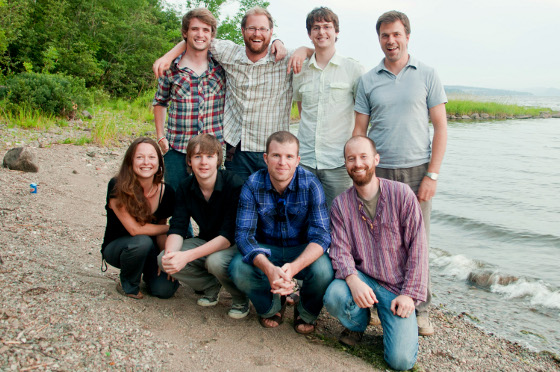What makes social media an essential tool for social enterprise is
Advice, resources, and insight on how to make social engagement work to grow your business and career.
Viewing entries in
Clients
What makes social media an essential tool for social enterprise is
Every organization has blind spots and, for most, social media is on that list. Yes, still. The ones who figure it out and run with it are the ones who work to fully understand it. There's still a lot of time to get there.
“all social media is fundamentally about relationships and people connecting to people — not companies or brands”
a simple, common sense, social media policy and saved it in formats for download that you can print and staple to a common wall in the office, if necessary.
 You may think that having a strong profile in all places might be only for the hyperconnected so I have a strong suggestion: pick one and beef it up.
You may think that having a strong profile in all places might be only for the hyperconnected so I have a strong suggestion: pick one and beef it up.
While many of us have accounts on multiple websites, social networks, and our employer's sites, very few people pay attention to the quality of their online presence and the ease with which they can be reached by a client or partner. We have discussed before how your profile is your ticket to getting connected with others online but we never addressed which profile is the most important. I honestly don't think there is a best one for everyone but here is some food for thought:
Really, this is the most important profile for professional people in the western world. Your profile on Linkedin is comprehensive showing me your volunteer activities, who you're connected with that I might be connected with, as well as the richest display of your education and experience. If you don't have a sizable inheritance and need to make a living from your connections to one or more people, you need to be on Linkedin. If you are in a B2B role, you might want to make this your main profile that you give the most attention to.
Put aside your opinions of love or scepticism for Google+ as a social sharing channel and pay attention to this: your Google+ profile feeds your Google search results and Google search is how most people still find pretty much everything online - including connections. It is also the best profile for linking to all of the other places you can be found online and it includes one of my all-time favorite profile features for understanding another person's perspective: where have I lived before. If you want people to find you easily you might want to make Google+ your main profile.
About.me is like an online business card or a central hub for all of your other profiles. It has competitors but it is the most popular profile-only account you can have that doesn't have a social network behind it. It is easy to get, simple to use, attractive, and adapts your profile to a variety of screen sizes well. If you are picking one main profile to focus on, this might not be it, but if you have more than a couple that you give attention to, this might be a good place to bring them all together. I use it for my main URL: jeffroach.ca
The largest, most influential social network on the planet has a lousy profile format that not a lot of people rely on to get to know someone new. Facebook's profile is loose, un-standardized and sloppy and geared more for friends who know each other well than for discovery of someone new. However, Facebook does feature more personal preference type of details that might paint an endearing picture for you if you want to be known more for your interests than your experience. Artists, curators, and culture-lovers can show their favorites of all things well on Facebook and that might be your strength.
With a bio of only 160 characters and only a few other details like location, web link, and not much else, your profile on Twitter is too short and simple to ignore. Beef up your profile on Twitter because it will only take you a few minutes. But don't expect your profile on this channel to satisfy the interests of a connection who is trying to get to know you better. I simply would not recommend using Twitter as your main profile online. Link from it to something more comprehensive.
There are countless third-party profiles you can focus on and beef up and some of them can be very important, especially if they are specific to your industry and widely used by your colleagues. But the ones mentioned above are the big ones, in my opinion.
We don't all have time to be everywhere online and we certainly can't manage to support an endless collection of perspectives on who we are, what we've done, and why others might want to get to know us better - or hire us. But everyone needs one main profile that makes it easy to find out who they are, what they've done, and how to connect with them right now. What is your main profile and are you happy with what others will find there?
 Not everyone is social in the offline world and I meet so many people who are afraid to be social in the online world. If I can't find something to say in person, what do I say online?
Not everyone is social in the offline world and I meet so many people who are afraid to be social in the online world. If I can't find something to say in person, what do I say online?
That's an excellent point and troublesome now that social is how we reach an audience for our business. But while being social is powerful and builds the connective tissue that results in loyalty and reach for a social business, conversation isn't the only side of it.
Sharing great content is social. That might seem obvious but by segmenting out the acts of sharing content from engaging in conversation, those who don't like to converse so much can find a place in this space.
Most of us live a portion of our lives online and we all find great content every day that is relevant to our business and what we do. Share it! Your target audience wants to see what engages you and it will help to shape your brand. Articles, resources, instructional videos, infographics, photos - anything that can be helpful to your clients and imply what is important to you in what you do.
So there is a place for the quieter people amoung us. If you can't speak, just share.
Who do you know that has a lot to share but is reluctant to? How might you encourage them?
Note about the photo above: Sarah Tapley is a new Member of Learn by Sociallogical™ and is a design guru with Tuck Studio and Punch Inside. She spends each day with her nose in countless amazing design websites, her hands on the creation, assembly and display of super interesting design products, and listening to what inspires clients the most about the spaces they live and work in. Of course Sarah has a ton of great things to share! In fact, much of what Sarah has to share doesn't even need words. (Photo credit: Kelly Lawson)
 Online social media can draw people to your brand community and help return humanity to the world of business but it will never get rid of one-on-one voice conversations.
Online social media can draw people to your brand community and help return humanity to the world of business but it will never get rid of one-on-one voice conversations.
On one end of the bell curve are those who wish all human interaction could be kept to text and under their personal control. They see phone calls and postal mail as 'so last century', so they shun it as much from a sense of personal style as from a need to feel productive.
On the other end are those who are offended by the new social media and the distance it seems to breed between people. Completely misunderstanding what social media is and how it accomplishes just the opposite, they fear it will erode society through disconnection and lack of community.
Somewhere in the middle are those who are learning to use all tools for what they do best. And in this spectrum will always be a very important role for voice conversations that we've always known as 'phone calls'.
One-on-one conversations are disruptive. It's hard to do much else when you're having a conversation with someone else so multitasking must stop while you focus on the other person. This drives some people crazy.
One-on-one conversations are so important because they communicate importance. If your goal is to communicate how valuable another person is to you, dropping what you are doing and giving them your attention is a great way to do this.
[Infographic] Socially Awkward? How Online Relationships Affect Real-World Relationships sologi.co/fk4ph #learnsocial
— Sociallogical™ (@soclogical) November 15, 2012
Our family is currently expecting a baby and, as of today, we are 11 days overdue. Many people we love want to know what's going on and want to hear from us as soon as there is news. Most will find out when we post news online but my Mom wants a phone call.
To call my Mom and let her know what is happening with our baby's birth I need to set aside a few minutes to do nothing else but talk to her, just like in the olden days. But doesn't she deserve this? Shouldn't people in our lives like our mothers receive this top-level treatment in which we drop what we are doing and make them our priority for a few minutes now and then?
The same efforts that keep you close to your Mom can also keep you close to your clients.
We value various types of communication partly based on the investment required for the communicator to share it. We are so deeply offended by businesses who automate their communication too much because we feel we deserve more. We are giving them our money, after all. We also still cherish handwritten or signed letters or even requests for a video conversation because we appreciate the cost in time and effort involved for the other person to share with us in these ways.
I'm obviously not against all forms of automated communication and I am certainly not against one-to-many social media sharing. But it's important to recognize what each type of communication costs us and what we can expect from the relationships we feed with it.
Online social media keeps people connected to us and our brands. It keeps us on their minds, adds value if we are sharing helpful content, and allows us to keep personal connections alive the same way our grandfathers used to tip their hats and share a kind word with their neighbours (and their customers) on the street. But social media only enables a personal connection if we personally invest in it.
The technology will change but 'phone calls' or one-on-one voice and video conversations will never come to an end for any business that wishes to bring people close and to build community around their brands. A business can't chat with every customer. But every conversation they do have is an investment in relationships that should matter to a business.
Call your customers now and then, just to say "hi" or offer some friendly advice. Be cautious not to waste the other person's time, but if you know your contact is wanted or even requested your interest in wanting them to stay close to you will be understood better than with an email or a social network post. And that investment is worth so much more to the success of your business than extreme efficiency in how we communicate.
Do you shun the phone or embrace it as a powerful relationship building tool for your business?
The photo above is of me talking to Santa Claus on the phone, Christmas Eve 1978 - obviously proud that Santa would take a minute of his time to call me on his big night!
 In the mainstream, people are no longer excited just to be using social media. Users are becoming sophisticated about how they allow themselves to be interrupted by notifications and how they filter people and content based on their interests. This inevitability has implications for business and presents challenges especially for businesses who have been slow to embrace it.
In the mainstream, people are no longer excited just to be using social media. Users are becoming sophisticated about how they allow themselves to be interrupted by notifications and how they filter people and content based on their interests. This inevitability has implications for business and presents challenges especially for businesses who have been slow to embrace it.
The fad phase is over. That doesn't mean it is going away, it means online social discourse is the norm. As a society, we're not going back to relying solely on traditional media and the trends toward social will continue in that direction. But businesses can't count on just being there to ensure success in reaching their communities.
The novelty of making a video, posting a tweet, or writing a blog isn't enough for your audience anymore.
In the same way, just creating an event on Facebook or Google+ and sharing it is not enough to get people's attention anymore. Social media has become overwhelmed by events, especially on Facebook, so that it can be difficult to stand out or for people to even notice your event before the date arrives.
Advertising has been about getting noticed and remembered as well as having a clear call to action that appeals to your target market. Social media had a short run that could shortcut those first two requirements simply because it was on a novel platform with an attentive audience. Since social media has been mainstream for a few years now and the field crowded, the novelty is fading and getting attention online is becoming increasingly competitive.
Businesses that are not truly social will never be heard. Posting brand messages like an advertisement is not social and won't give you the engagement you're looking for. Getting to know the people in your community on a personal level is the only way to make the social channel work.
Unless a business can compel people to share its content because of its relevance to their lives, its importance to their friends, and the humanity of its approach, media creation will be a wasted investment.
The two principal measures of whether or not a piece of media content will be shared socially is 1. is it informative? and 2. Is it sharable? Without a yes to those two measures, your content is going nowhere.
Businesses can buy media but they can't buy social. There is a learning curve that social media imposes that takes time and forces a company to really consider who they are and who they serve. Get started on the learning curve and know that there is no solution that doesn't involve you and your team using social media on a personal level.
How else can you be "social"?
Yesterday afternoon 8 friends and clients of Sociallogical jumped on a free, high quality, responsive and easy to use video conference that was fun and shocked the heck out of more than a few of us. After our brief conversation, the whole thing was automatically uploaded to YouTube in HD quality where it can forever be watched and shared, hopefully for the benefit of others who want to give it a try.
This great experience was courtesy of Google+ and its Hangout feature and was simply a 23 minute chat for friends and clients who expressed interest in trying it out to do just that. We planned it last week, called it a Sociallogical Google+ Hangout Intro intended to last 5-15 minutes, and we broadcast it "On Air", which meant that anyone in the world could watch our discussion live as it was happening - and now anyone can watch the recording of it forever.
Want to try this? Learn How To Get Ready For Your First Google+ Hangout
I don't plan to blog about every +Hangout we host or take part in. But watching people experience the power and simplicity of this new medium for the first time is a pleasure and I urge you to watch a bit of it (below at the end of this post) if you have never seen it before. I actually started recording it early because I didn't want to miss the surprise and pleasure on people's faces. A couple of people had trouble using their microphones or webcams for the first time, but that's expected. They won't have that problem next time.
Just think of how powerful this tool can be to reach an audience and build a brand community:
Idea 1: Discuss new trends with leaders of your industry Idea 2: Instruct your clients on something they're interested in learning Idea 3: Give demos of your product to clients, potential clients or partners
There are lots of ideas that you can come up with to help your business by using it to build community around your brand. Think about it and let me know what they are in the comments below. We love learning new ways to be social.
And let us know if you'd like to join us on another "first-timers" Hangout sometime soon because it really was a good time.
Special thanks to Garth Frizell from Prince George, BC who was our experienced guide on this brief tour. And I'm so happy that Kelly Lawson, David Hayward, Greg Hemmings, Judith Mackin, Sarah Tapley and Chris Boudreau were all able to join us.
 What are the biggest myths of social media and social business that you have come across as a consultant or have dispelled as you have learned more about social media use in business?
What are the biggest myths of social media and social business that you have come across as a consultant or have dispelled as you have learned more about social media use in business?
This is not meant to mock the wrong-headed but to be a collection to help others steer clear of misconceptions that can take them down the wrong path or lead them away from a great opportunity. Here are a few from my list:
The 3 things on my list were easy to choose as they are incredibly common. If you end up blogging about any of the items on your list or have good resources to support them, please share links with your list.
What are the biggest social media myths from your experience? Please share in the comments.
People don’t socialize with brands, they socialize with people. So even if you have a brand account for your business, finding a way to feature your people through it is essential. Here are a few questions to ask yourself when sorting through this issue.

We all know that small things can make big differences and signing in to an online service can be a big pain for a lot of people. So, to make things easy for our learners, we have installed a single sign-on (SSO) service so people can sign on to our courses using their Google, Facebook, or LinkedIn accounts instead of needing to remember yet another password.
This is the first in a list of feature and usability improvements we are rolling out this month all to serve one purpose: to make Sociallogical Learn the ideal environment for business people to learn social business and to mentor each other through the big changes of the coming decade.
If it's your first time using Learn, just click one of the social icons to the right to get started with SSO. Once you select a service, you're walked through the rest of the process and a Learn account will automatically be created for you.
Already using Learn? You can still make use of this convenience.
When you're done, you can forget about your Learn password and just use SSO to sign on in the future!
It's quite simple really - we are simply linking your social accounts to your Learn account. These relationships are then automatically saved and remembered for future use.
We know that passwords are a pain for most people - they are often a pain for us. So we hope this simple improvement makes life a little bit easier for our learners by making it easier to visit us more often and find out what's new in social business.
 This week Sociallogical is rolling out several updates to the content of our online course, Understand Social Business, that includes Pinterest, Instagram, Google+ and other developments over the last few months that have changed how we create and share content, build brand communities, and run companies.
This week Sociallogical is rolling out several updates to the content of our online course, Understand Social Business, that includes Pinterest, Instagram, Google+ and other developments over the last few months that have changed how we create and share content, build brand communities, and run companies.
There's a lot more that we have added, removed, and updated that you'll see in the course over the weekend. To keep up with the rapidly changing technology and cultural shifts that change how we grow companies, we're excited to bring this fresh perspective to the business teams who subscribe to our course to make the shift to social.
We want to help companies transform their cultures by helping their people understand the opportunities and goals of becoming a social business. What decisions have you made for your company this year to keep up and get ahead?
 The people who work for your company need to be the core of your community, online and off, if you hope to build a community around your brand that draws people to you.
The people who work for your company need to be the core of your community, online and off, if you hope to build a community around your brand that draws people to you.
As a business, you are all together to build something you believe in. You work with people who you have something so in common with that you spend 40+ hours a week together doing it.
When people look for you online, what they need to find is your community, sharing and amplifying each other's content and talking with each other, like friends and colleagues do. Your social media community is the heavy lifter of your inbound marketing strategy. Trying to draw people to your brand without it is as unlikely to succeed as not advertising was back in business 1.0.
Here’s the basic Sociallogical prescription for building a brand community:
This active community you build with your first line of stakeholders is the best social asset you have available to you. If you don’t socialize with each other, why would anyone else want to?
NOTE: The Photo above is the Hemmings House team, who we had the privelege of working with this year. A fantastic small company that is an attractive core for a growing and engaging community for their brand.
 Relationships begin with a gift. It may be as small as a smile or a suggestion, but something is given so the other can reciprocate and the back and forth of relationship has begun.
Relationships begin with a gift. It may be as small as a smile or a suggestion, but something is given so the other can reciprocate and the back and forth of relationship has begun.
It's no different when we go online and it is unreasonable for anyone to expect relationship to emerge without this interpersonal volley. When we retweet someone's post, comment on their article, tag them in a photo, or recommend them for their work, we are giving something of value to them that feeds a relationship and we all know it.
Think of how you feel when you get the message that "Arnold @Schwarzenegger favorited your Tweet". Even if the message comes from someone who works two floors down, that's a small gift that validates your choice to share something and draws you to that person.
In our company we give things away all the time. We use the #learnsocial hashtag on Twitter and Google+, the Learn Social group on Linkedin, our Facebook page, and this blog to share articles, advice, and perspective that we hope our clients and partners will find useful and helpful to learn social business.
And today we are giving away a free intro course on social business:
"Businesses grow when their people get social. That's where we come in." Take a free course and #learnsocial: awe.sm/5fE6k
— Sociallogical (@soclogical) February 11, 2012
We know that our learning environment creates a mentorship among a small group that is incredibly helpful for people who want to learn how to do business online. Our courses give the understanding and knowledge of this new medium and culture that tactics and strategy are built on.
And as we grow and develop our platform over the coming months, this free course will gain the new changes and features of the rest of our mentorship platform so visitors can see for themselves, with no risk, if the help of our community and knowledge might help them do business better.
Our free course isn't fancy, but it's got some great insight and knowledge as a sample of what someone will learn if they signup for our full course or one of the new courses that we are now building. This is just a small gift to those who want to get to know us better.
How do you start relationships online?
 In my last year of high school I read George Orwell's essay, "Politics and the English Language." Five years later, I still refer to it. His words are cemented in my brain. Orwell is known as a visionary, someone whose words were thought to hold particular truths about the future. At the very least, the guy knew how to write.
In this particular essay he's trying to tell us that the English language (and society itself) are in a state of decay. He explains the cause/effect relationship between language and writing by using a metaphor. A man who fears failure may drink, and as a result, he fails. It's a vicious cycle. He writes that our language is a mess because our thoughts have become foolish. But the way we are engrained in language and its use in our culture causes us to have foolish thoughts.
In my last year of high school I read George Orwell's essay, "Politics and the English Language." Five years later, I still refer to it. His words are cemented in my brain. Orwell is known as a visionary, someone whose words were thought to hold particular truths about the future. At the very least, the guy knew how to write.
In this particular essay he's trying to tell us that the English language (and society itself) are in a state of decay. He explains the cause/effect relationship between language and writing by using a metaphor. A man who fears failure may drink, and as a result, he fails. It's a vicious cycle. He writes that our language is a mess because our thoughts have become foolish. But the way we are engrained in language and its use in our culture causes us to have foolish thoughts.
To fight against the decay of our language and quality of speech isn't trendy. When people are indoctrinated to read, speak, and think a certain way, it's hard for them to see the value in change. Orwell writes:
"It follows that any struggle against the abuse of language is a sentimental archaism, like preferring candles to electric light or hansom cabs to aeroplanes."
He explains the specific ways we've ruined the English language through politics. Have you ever read a statement from a politician and had to sit and analyse its meaning? The hallmarks of political writing are vagueness, pretentious diction and the use of euphemisms in place of something more blunt. For example, when discussing war, people often say "collateral damage" in place of "the killing of innocent victims."
"Political language - and with variations this is true of all political parties, from Conservatives to Anarchists - is designed to make lies sound truthful and murder respectable, and to give an appearance of solidity to pure wind."
And even though Orwell wrote this essay in 1946, the essence of the message hasn't changed over time. I'm going to go through 5 ways he can teach us to write with conviction.
Anything we're used to seeing in print tends to roll off the tongue. I'm guilty of this myself from time to time, I'll admit.
Some examples: beating a dead horse, hell in a handbasket, stand shoulder to shoulder with, fish in troubled waters, etc. There are hundreds, possibly even thousands of these tired clichés.
The problem with them? Orwell puts it simply, by saying they present "staleness of imagery." When we read these expressions they often fly completely over our heads, we miss their meaning because they conjure no real image for us. Fresh, original thoughts are much more powerful.
It's easy to be vague in our writing, or extend our thoughts over multiple sentences. We see this a lot in academic writing. I'd be reading my sociology textbook and have to read and re-read every other sentence because they just seemed to drag on and lose my interest. That's not good. Orwell argued that prose consisted less of words for their meaning and more "phrases tacked together like the sections of a prefabricated henhouse."
People often use a foreign word to sound formal or authoritative on a subject, but they don't realize that it has the opposite effect. The plainest, most ordinary English word has a clearer meaning and a harder impact on people.
I encountered this a lot in my university career. As a journalism major, I developed a thorough understanding of the power of simple, ordinary English, which furthered my appreciation of what Orwell was trying to tell us. My sociology profs would tell me my term paper was "a good read" and I'd laugh because I'd think of the hours I spent dissecting academic papers written by "experts." A few times they were so unclear that I ended up crying in frustration. Why use 100 words when you could have said it in 10?
To further develop the point made above; why use "inextricable" when you can say "tangled?" Why put "circumvent" in place of "avoid?" Why "terminate" instead of "end?" It sort of goes without saying. What sounds better? It's almost always the simplest form.
"The psychologist delayed terminating the session because the patient was visibly overwrought."
or
"The psychologist delayed ending the session because the patient was clearly distressed."
Vague writing is the worst kind of writing. If you're not sure about what you're saying, or you simply don't care about what you're saying, how do you expect your readers/audience/customer to care? Be direct. Use active words. I'll give an example of the contrast:
It has happened that people have lost interest in the use of proper grammar on social media channels because they couldn't have been bothered to make the effort.
People aren't using proper grammar on social channels because they're lazy.
It's easy to fall into long, passive, boring habits. We all do it. But as soon as we become conscious of it, we can catch ourselves at it, and start communicating more effectively.
We can't let our language skills fall apart on social channels. It's even more important that we be producers of good content. Social is a relaxed environment; it's free, it's open, it's very casual. The language should accommodate this. But when we blog, tweet, or post, we should keep these tips in mind. People are compelled by good writing; meaningful and to the point. Clear?
Have you ever met someone at an event and thought ‘wow, he’s nothing like his online profile?’ It’s a first world situation, and it happens all the time. When someone is in front of us, their natural character emerges, pretty or not. Body language, tone of voice and how we regard our surroundings all sync to form an impression.
But, in 2012, there’s a good chance you’ll see someone’s online profile before you meet them under real life circumstances. Think about it. How many times have you tapped into Facebook to feed your curiosity upon meeting someone new?
There's something to be said about the digital first impression. We’re in the age of “creeping,” whether we admit to it or not. The impression we leave with people could be a blessing or a write-off. We may never know.
Psychologists explain first impressions as part of encoding in the brain. We make quick, exaggerated judgements based on parts of a whole. It's hard to fathom why initial encounters have a semi-permanent effect. "The First Impression," by Carlin Flora, former editor of Psychology Today, sheds light on the issue. Flora writes:
"...The brain takes first-impression Polaroids—creating a composite of all the signals given off by a new experience. Psychologists agree that snap judgments are a holistic phenomenon in which clues (mellifluous voice, Rolex watch, soggy handshake, hunched shoulders) hit us all at once and form an impression larger than their sum."
The dynamic changes when an initial glimpse into our personalities occurs online. We suddenly lose the ability to see or hear the person. All we have to base judgements on are profile pictures, brief summaries, the kinds of things a person shares and the way they interact with others through text.
We can't control the ways of the new world, and chances are, employers will search us to find out more about us. We should use this opportunity wisely, as we'll never know who may be watching or what they're thinking. Here are, in short, five fundamentals for personal branding:
Whenever I go to write a bio for myself I pause. At 23, I'm really still defining myself as a professional. I don't know who I'll be at 30, 40 and so on. But I do know where I want to go. This is important. When you a have a limited amount of characters to describe yourself (160 on Twitter,) you need to make the most of them. The more information you can pack into those is good: a lawyer who dabbles in photography and loves to cook, etc. You have to believe in yourself before anyone else will. We can trust a mother's word on that.
Something I read in Halligan and Shah's Inbound Marketing stuck with me. The authors' point out the importance of using your real name, first and last (if possible.) When we add numbers it gives the appearance of spam. If your full name isn't available, you can abbreviate in ways that look more professional; mentioning where you're from, for example. To take it further: using the same name across social channels makes us more accessible to our audience.
Keeping in mind the "Polaroids" produced by the brain (that often stick) we have a small window of opportunity to either intrigue people or turn them off. In terms of simplicity, playing it safe is good. People who don't know us will assume things based on things like layout, what kind of photo we choose, and how we describe ourselves. A modest, professional profile picture is ideal. If it offers a touch of personality it's better.
A post on Pick The Brain, a blog focused on personal productivity, gives some simple but useful tips on selling yourself. We're reminded that the company we keep is significant and how far a smile will take us.
Often, telling someone to smile will piss them off. When I'm in a yoga class and twisted into a pretzel, the instructor always says "remember to smile!" and I sometimes grind my teeth - but it makes a difference.
In The Rules of Work, an international bestseller, Templar writes:
"At first you don't have to believe it - just do it. Act it. Pretend. But do it. After a little while you'll find it isn't an act, you're not pretending, you genuinely do feel cheerful. It's a trick. You are tricking yourself, no one else. Putting on a smile triggers hormones. These hormones will make you feel better. Once you feel better, you will smile more, thus produce more hormones."
People are drawn to positivity; we want to hear from those who are happy, motivated and energetic. It's common to complain on social channels, because it's easy to take out our frustrations on a keyboard. We must actively remind ourselves why we can't fall into that pattern: it makes us feel worse, and turns people off.
There is such thing as an over-share, even on the internet. A woman who recently followed me on Twitter describes herself, in her bio, as "an overdrinker" and "a former party-hopping hussie." I wasn't inclined to follow her back, to say the least.
Respectively, we don't want to take ourselves too seriously. Social channels are a place to have fun. It's hard to describe in a cut and dry way, but we should really consult our "moral compass" before we tweet, update, or post. Imagine your grandmother at the other end of the (virtual) tunnel. As weird as that may sound, it has an instant "reality check" effect and we are reminded to use caution in what we share. Are you keeping your audience in mind before you hit send?
 Scenario: You're meeting a friend for dinner in an unfamiliar city. They ask you to choose a place. You don't really have time to sift through online reviews; they can be unreliable, even fabricated. So, when you have a free moment, you log into Foursquare. You search restaurants and explore what people (maybe your own friends) are saying about different stops. It doesn't take long; you find the ideal spot, save it to a list and carry on with your day. You can relax knowing your friend will (likely) approve.
Scenario: You're meeting a friend for dinner in an unfamiliar city. They ask you to choose a place. You don't really have time to sift through online reviews; they can be unreliable, even fabricated. So, when you have a free moment, you log into Foursquare. You search restaurants and explore what people (maybe your own friends) are saying about different stops. It doesn't take long; you find the ideal spot, save it to a list and carry on with your day. You can relax knowing your friend will (likely) approve.
This whole notion of "checking in" and applications that track our location (Gowalla is another example) is still emerging, relatively new to our society. Many are slow to warm up to the idea of social media at all; maps and location add a whole other dimension to the experience.
On Foursquare we leave "tips" which help out future visitors at any given location. We can feel good knowing the reviews come from REAL people, with bios, and linked accounts. Many of them will come from our own friends.
There's something to be said here: it's another example of how traditional "word of mouth" has been replaced. Of course, there are endless review sites online. But, it's not always clear who's writing them. In many cases, it's easy to pose or "astroturf," writing calculated reviews with a secret agenda.
Most people are on Foursquare to connect and share their favourite places with friends and their community. And maybe have a little fun while they're at it.
In my research I've encountered a trend: reviewers fall into one of two categories: early adopters who love Foursquare, and those who don't see it's value at all. To further my point, here are good examples of arguments for and against adopting the application.
A blog post by David Pierce explains the advantages of this media tool well. While the linked review site is no longer active, Pierce is now a Reviews Editor at The Verge, a prominent technology news source.
This post opposes the former. The author is a Senior Brand Planner at SapientNitro, an established marketing and technology services firm in Boston. He argues that most check-ins are of little value to our audience. No one cares when we're at the gym or sitting in our office. He says the application isn't used widely enough for the tips to be resourceful in catering to our tastes.
But, as Pierce explains, Foursquare doesn't just give us a list of check-ins. It notifies us if a friend is nearby. It also plays on our natural competitive sides with its points system, making it a place to have fun.
It's usefulness is entirely subjective. It depends fully on whose opinion you value, and how many people in your social circles are using the application. The technology will evolve and it may even become recognized under a new name, but in the future its purpose will only become clearer as the world grows social. How many of your friends are on Foursquare?
 Have you ever lost yourself in a book? There's something about the narrative that takes hold of us; our minds are held captive for some time in an imaginary place, that is, fostered by a great story. We feel involved somehow, it becomes part of us and us a part of it. We draw comparisons between characters and ourselves, and judge them as we would people on the street.
Have you ever lost yourself in a book? There's something about the narrative that takes hold of us; our minds are held captive for some time in an imaginary place, that is, fostered by a great story. We feel involved somehow, it becomes part of us and us a part of it. We draw comparisons between characters and ourselves, and judge them as we would people on the street.
Storytelling is an integral part of life. As children, we develop a sense of right and wrong through parables; ideas become cemented in the brain and are carried out in our life experiences. For example, The Boy Who Cried Wolf is a compelling tale that explains the value of integrity. When we're given a real example of human struggle (a boy's lies lead to self-destruction,) something clicks and we attach meaning to it. These stories stick with us because they are widely relatable.
We grew up listening to teachers speak of things we'd need to know in the future. As adults, we're motivated to learn things of immediate value to us.
Storytelling binds us all, regardless of race, class or gender. We can gain new insight on our own lives or problems we've faced through the experiences of others. Self-discovery inspires new learning and growth. A journal article in Adult Learning highlights this idea:
"Narrative thinking, as opposed to analytical thinking, is relational rather than linear; it holds power to help tellers and listeners make new connections, linking various aspects of experience in new ways. Making these linkages frequently leads to revised interpretations, enhanced self-awareness, and learning that precipitate constructive, developmental change."
Social media IS the new storytelling. It connects us to those in our communities, it gives us a venue to share our experiences and provide insight to others. Through social media we learn more about who we are through the kinds of people we attract and those with whom we engage with.
The article mentioned above argues that as adults, we have the capacity to "rewrite ourselves" and our life stories. We've developed beyond the impressionable phases of youth but we're not immune to reinvention.
Listening to our peers can open doors for us. It forces us to re-evaluate, drawing new light to the way we've always done things. This can be incredibly powerful.
"Stories are relational; they build relationships, create bonding links between educators and learners, and complement analysis with more holistic views of experience."
Is there someone in your office who's active in social "storytelling?" Find the person who's most comfortable with social media and get them to share their story. Social media changes the way people communicate as professionals. If we can understand how these tools have a real-life impact on someone we know, we're more apt to give them a try and discover new possibilities.
A good way to ease into social media is by creating a blog. The human effect is instant because blogging is so expressive - the design, photos we choose and insight we share combine to give our audience a taste of who we are.
And a blog can be about anything - interests we have, places we've seen, or maybe it's a place to talk about constructive changes in our work. If you become comfortable with blogging, it will be easier to shift into Twitter and other social media and start sharing and connecting. Social media isn't something that just happens - it's something we adapt to over time. Have your colleagues made the shift? Have you thought about telling your story? There's never been a better time.
 Most professionals would agree that we don’t become comfortable with social media overnight, but rather, through gradual stages of exposure and engagement. An organization evolves as it passes through the social media adoption continuum.
Most professionals would agree that we don’t become comfortable with social media overnight, but rather, through gradual stages of exposure and engagement. An organization evolves as it passes through the social media adoption continuum.
A blog entry by strategy consultant Maxime Teller illuminates this notion of social media adaptation.
I sense a real need to establish and distinguish the roles of a consultant in social business processes.
While companies gradually pass through the social media adoption phases (education, observation, broadcast, participation, relationships, collaboration). I’ve identified three central stages that are part of developing social businesses. The social business stage a company resides in defines their perception of the distinct roles consultants play.
At this stage, companies have recognized the value in establishing an online presence through social media channels. Through education, observation or broadcasting they’ve acknowledged the gravity of social media; it’s not just a passing trend, but here to stay.
Accepting social media comes first. Understanding its usefulness comes later. At this point, the challenge lies in our perception of social media. At a glance, it seems like a “marketing tool.” Focus is placed on logistics: setting up accounts, broadcasting messages and campaigns, with a focus on the immediate “what” and less on the underlying “why.”
We get ahead of ourselves. This can be understood through an old expression: “putting the cart in front of the horse.” We’ve jumped in the cart (implemented new tools) but we aren’t moving without a horse (strategy). We won’t experience the benefits until we develop a strategy to get us from A to B. Only through experience do we come to know social media as a means of collaborative engagement.
The consultant (you) often assume the role of technician (as defined by the E-Myth) and you’re paid for the execution of tactics in place of the development of strategy (which you still do). However, this tactical approach can be used as a catalyst to push an organization to the next level. Accounts are ready but knowing how to use them requires guidance and mentorship.
In this stage, organizations have started to see social media through a strategic lens. They may be in the broadcast or participation phase, but with open minds. They’re exploring its potential as a two-way communication medium for things like public relations, competitive intelligence, R&D, market validation and customer service. Because they've passed the education and observation phase, they place a high value on the "why" part, understanding that a well-defined strategy will lead to business success.
Assuming the role of strategist, you’re not only paid for tactical execution, but for the development and implementation of strategy itself. Depending on where the client is in the adoption continuum, they may not be open to the corporate culture shift needed to see a social strategy through. This presents you with a real challenge.
Organizations at this stage have developed relationships and collaborate with others. These are typically companies that have already "baked" social into the enterprise. They understand that building community and having a “pay it forward” mentality will translate to positive brand experiences (Ex: Ford, HubSpot, Radian6).
Taking on the role of thought leader pushes you above the “noise” (those competing against you for the organization’s business). Why? Because key stakeholders turn to industry leaders first for insight, advice, and direction before making a purchasing decision.
When I consider thought leadership in the social space, these people stand out in my mind: Brian Solis (Altimeter Group), Peter Kim (Dachis Group), and Dan Zarella (HubSpot). We can draw on the insight of established innovators to grow a social business, for ourselves and our clients.
Have you found yourself at a crossroads in one of these stages? What are your sticking points in helping your clients grow? Let me know in the comments.